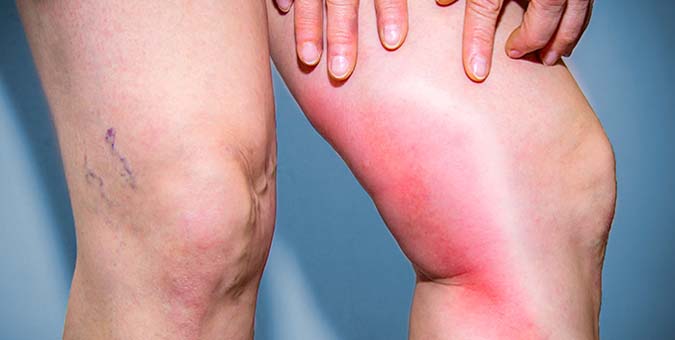Deep Vein Thrombosis (DVT) is a health condition that occurs when a blood clot forms in the veins of your body; the blood clot often forms inside the legs. This can occur with no symptoms or can cause swelling or leg pain. Find out about chronic DVT treatment. The sooner you do so, the better your chances of lessening your recovery time.
What Causes Deep Vein Thrombosis (DVT)?
It is important to note; if you have certain medical conditions, DVT can develop and affect how your blood clots. Other causes are not moving for a long time after an accident or surgery, or if you have to stay in bed for a long period of time.
Can DVT be a serious health matter?
Deep vein thrombosis can be serious. Blood clots in your veins can break loose, travel to your lungs and block blood flow. This can impair your breathing and cause a pulmonary embolism.
What are the symptoms?
There are certain symptoms of DVT, such as swelling and pain in the affected leg, red or discolored skin and a warm feeling in the affected leg.
When should you see a doctor?
There are some signs and symptoms of deep vein thrombosis that are more urgent than other and should invoke you to see a doctor. For example, shortness of breath is the most common symptom. Other symptoms are chest pain, feeling lightheaded, rapid pulse, or coughing up blood.
What doctors treat DVT?
Initially, the diagnosis of DVT is made by your doctor; however, other medical specialists can provide a diagnosis such as an internist, a family practitioner, or an emergency medical specialist. In addition, you could be referred to a vascular surgeon or a radiologist who can help with your care. Others who may offer assistance and hep are a pulmonologist or a hematologist, a person who specializes in blood disorders.
What are the risk factors?
Some people have inherited a disorder that make them more vulnerable to DVT, but there are more common risks. For example, staying in bed too long, as with a hospital stay, being pregnant, taking birth control pills, being overweight, smoking, cancer, being older, and sitting too long.
What are the treatments for DVT?
The goal of DVT treatment is to prevent clots from getting bigger and to prevent the clots from breaking loose and causing a pulmonary embolism. Another treatment option is blood thinners. Blood thinners can decrease the blood’s ability to clot. If your DVT becomes serious, clot busters may be given to you as well.
Other treatment methods
Another treatment method is filters. If you are unable to take medicines to thin your blood, a filter can be inserted into a large vein in your abdomen. Compression stockings are also effective for some. Compression stockings prevent swelling that is associated with deep vein thrombosis.
Things you can do at home
After you have been given a treatment plan for DVT, there are things you can do at home that will help such as seeing your doctor now and then to see how your treatment plan is progressing. It is also important to take your blood thinners as prescribed, watch for bleeding, and should you have an injury or accident be sure to keep moving once the allotted time for bed rest is over.
Read Also: Top 3 Tips To Improve Mental Energy And Focus
Deep vein thrombosis (DVT) is a health condition that occurs when a blood clot forms in deep veins within your body; usually occurring the most in your legs. Talk with your doctor today and find out more! It is important to not hesitate in taking care of this health matter. With proper care and treatment this health care concern can be taken care of.




































